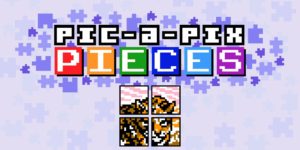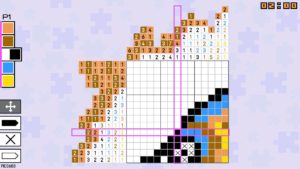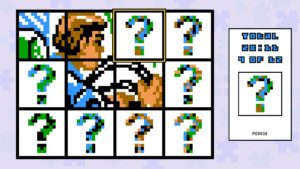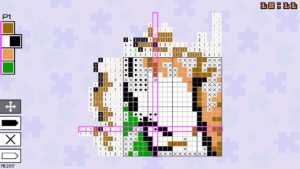
Whenever “game of the year”, “best indie games”, or “best games on Switch” lists get tossed around, one of my choices is always Pic-a-Pix Deluxe. Ever since I discovered it I’ve jumped at every opportunity to review every release Lightwood Games puts out. While I’ve enjoyed them all as a whole, Pic-a-Pix Deluxe has always been my favorite. So when I learned about Pic-a-Pix Pieces in December it felt like a Christmas miracle!
For those unfamiliar with Pic-a-Pix games they’re “picture crosswords” (also referred to as picross or nonogram puzzles). Your goal is to fill in an image using numerical clues around the top and side. Not only will you be completing the puzzle, you’ll be working toward creating an image! Puzzles range in size and difficulty from puzzles that can be completed in less than a minute to ones that require 20+ minutes each.

The controls are the same as Deluxe: you can fill squares with the selected color, swap between colors, mark a square with a diamond or X, or check for errors. Checking for errors will give you the total number of errors found, but not where they are. From here you can also ask the game to fix the errors for you, but doing this means you won’t receive a medal for the puzzle.
With Pic-a-Pix Pieces there are giant mosaics that are made up of individual puzzle pieces. Each of these pieces is a full 10×10, 15×15, or 20×20 puzzle of its own, and the mosaics range from small 2×3 images to gigantic 6×4 images. What’s unique about this is that the puzzles actually feel very different from one another. Where typical picross puzzles usually require you to start with the fullest lines, the inner pieces in Pic-a-Pix Pieces are often solved more like jigsaw puzzles, figuring out all of the borders first and then working your way toward the middle. Some puzzles have only two colors while others have five; sometimes you’ll knock out all but one of the colors very quickly, essentially leaving you with a classic one-color puzzle to solve. This variation of puzzle type not only means that gameplay stays fresh, it also means this actually feels like a separate game from Pic-a-Pix Deluxe despite sharing the same system.

Aside from being a completely different beast puzzle-wise, I found Pic-a-Pix Pieces to be a slight improvement over Deluxe. As I already mentioned, the puzzles that I played were all very solid and the variation was terrific. In Deluxe, puzzles slowly increased in difficulty until the later puzzles were a huge challenge. In Pic-a-Pix Pieces, while puzzles do gradually get more difficult, even the hardest mosaics have some easier pieces within them. I was also delighted to discover new background music themes! I really loved the theme of Deluxe, but it was only one song for all of the puzzles. Pic-a-Pix Pieces has 4 or 5 songs total (including the original!), and I actually liked them all as much as the original! Finally, for the completionist in me, it’s rather nifty that clicking on a completed mosaic showed how many medals you have. This makes it way easier to go back and get any medals you missed.

Pic-a-Pix Pieces is a great addition to Lighthouse Games’s puzzle game lineup, and at only $8 it’s the price of 3-4 Pic-a-Pix Deluxe DLC. Pic-a-Pix Pieces has around 350 puzzles across 20 mosaics, plus the content from the two demos, which adds a total of 4 mosaics and 36 puzzles. On a personal level, I completed the first mosaic in less than 9 minutes, and the last mosaic took 5 hours and 14 minutes without even getting all of the medals! If you’re not a fan of picross puzzles, Pic-a-Pix Pieces won’t change your mind about them. With that said, it’s still the best-executed system I’ve seen for picross puzzles (I’ve played a LOT!) and the puzzles are a blast.

Pic-a-Pix Pieces is available on Nintendo Switch (reviewed) January 3rd, 2019, as well as PlayStation 4 and PlayStation Vita January 8th, 2019 (links not available at time of publication).
A review code was provided for this review.

